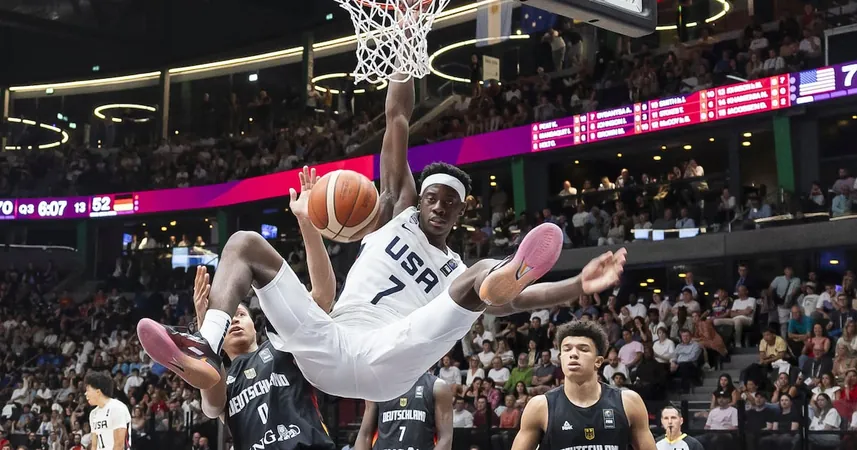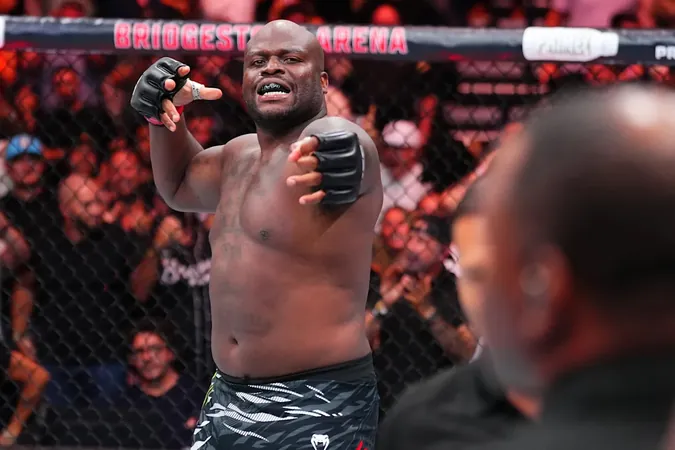
Is Google's Monopoly Making Publishers Pay the Price? A Deep Dive into the 20% Commission Controversy!
2024-09-16
Author: Jessica Wong
Google’s 20% Commission Controversy
For years, Google has maintained a hefty 20 percent commission on ad transactions processed through its platform, a rate significantly higher than what competitors in the industry typically charge. While Google executives privately acknowledged the difficulty in justifying this fee, the U.S. Justice Department now cites it as a major indicator of Google’s monopolistic grip over the online advertising market.
Antitrust Action
The issue came to a head during the Justice Department’s second antitrust trial against Google. Opening with powerful internal documents and compelling testimonies from former executives, the DOJ argued that Google has successfully avoided meaningful pricing pressure, thus reinforcing its market dominance. This week, YouTube CEO Neal Mohan, who once sold ads for Google, is expected to take the witness stand and provide further insights into the company's practices.
Internal Concerns
Internal discussions revealed that Google’s own leaders questioned the sustainability of the 20 percent fee. In one heated email exchange from 2018, Jonathan Bellack, a Google advertising executive, acknowledged the fee was “not long-term defensible” and highlighted the need for it to align with market standards, suggesting it “shouldn’t be double the price.” Despite these concerns, the high commission persisted due to Google's unparalleled access to a vast network of advertisers via its Google Ads Network, which publishers could only tap into fully through AdX.
Market Pressures
Adding fuel to the fire, in a 2019 email, former Google ads executive Chris LaSala recognized the pressure from advertisers and publishers for more transparency, calling the justification of such a high fee “questionable” at best. He even hinted that the market rate for open auction ad transactions was closer to 10 percent, far below what Google was charging.
Broader Implications
This debate over commission rates reflects a broader struggle in the advertising world. Brian O’Kelley, founder of the ad exchange AppNexus, described Google's 20 percent take rate as “dramatically higher” than that of its competitors. Internal communication among Google executives clearly demonstrates their awareness that the power to integrate their publisher-side tool with such a large advertiser base allows them to sustain this inflated commission.
Justice Department's Accusations
While Google's spokesperson, Jackie Berté, contended that publishers typically retain around 70% of revenue from ads sold using Google’s technology, the Justice Department continues to argue that Google has engaged in illegal conduct to retain its monopoly by tying its publishing services to its ad exchange—a maneuver purportedly aimed at stifling competition rather than enhancing service quality.
Challenges for Publishers
The reality is stark for many publishers: the transition to different ad servers isn't just complicated; it’s daunting. LaSala himself admitted it’s a “heavy lift,” recalling only one instance where a major publisher, Disney, opted to create its own ad server instead of switching to a competitor. Similarly, Tom Kershaw, former CTO of Rubicon's ad exchange, bluntly stated that avoiding Google’s services would leave publishers in a perilous position—“starving to death” in a competitive market.
Future Considerations
As this trial unfolds, it raises significant questions about the fairness and sustainability of Google’s practices in digital advertising. How long can this monopolistic hold persist, and what will ultimately happen to the small publishers caught in the crossfire? Stay tuned as we continue to monitor developments that could reshape the landscape of online advertising!



 Brasil (PT)
Brasil (PT)
 Canada (EN)
Canada (EN)
 Chile (ES)
Chile (ES)
 Česko (CS)
Česko (CS)
 대한민국 (KO)
대한민국 (KO)
 España (ES)
España (ES)
 France (FR)
France (FR)
 Hong Kong (EN)
Hong Kong (EN)
 Italia (IT)
Italia (IT)
 日本 (JA)
日本 (JA)
 Magyarország (HU)
Magyarország (HU)
 Norge (NO)
Norge (NO)
 Polska (PL)
Polska (PL)
 Schweiz (DE)
Schweiz (DE)
 Singapore (EN)
Singapore (EN)
 Sverige (SV)
Sverige (SV)
 Suomi (FI)
Suomi (FI)
 Türkiye (TR)
Türkiye (TR)
 الإمارات العربية المتحدة (AR)
الإمارات العربية المتحدة (AR)